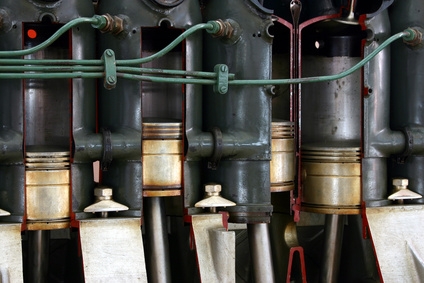
Cylinder honing refreshes the inside surface of a cylinder after it has been taken apart in an engine rebuild, especially when a new piston and piston rings will be used. The honing process is not complex, but it can quickly damage an engine cylinder if not done correctly. This article assumes your engine cylinder has already been removed and is ready to be treated.
Check that the speed of your power drill does not exceed 1,600 rpms. Choose a honing tool that fits the diameter of your cylinder to be worked on. Connect the tool to your power drill and lock it into place with your drill chuck tool.
Apply an oil-based lubricant on the inside surface of the cylinder (basic engine mineral oil or special honing oil work just as well). Insert the honing tool into the center of the cylinder. Start the tool slowly so that it begins to make contact. Pour more oil as it rotates along the surface to spread the lubricant evenly.
Pull the drill trigger to increase the speed to maximum. Move the honing tool in and out of the cylinder quickly as you pick up the speed to maximum rpm. Do this repeatedly up to five cycles. Stop honing and check the results. Look for a shiny surface without any scratches, scars or burn marks. Repeat five more in/out cycles and check again if the results don't match. Reverse the direction of the drill when satisfied and repeat the process going the opposite direction. Repeat the five-cycle process until you see a cross-hatch shiny surface inside the cylinder. Avoid wearing out more metal than necessary.
Complete the honing process and put away the honing tool and drill. Wash the cylinder down with water and soap. Dry it off completely to avoid flash rust using a lint-free towel or cloth. Use your fingers to apply a thin surface of engine motor oil on the cylinder inside surface to prevent rust while in storage.